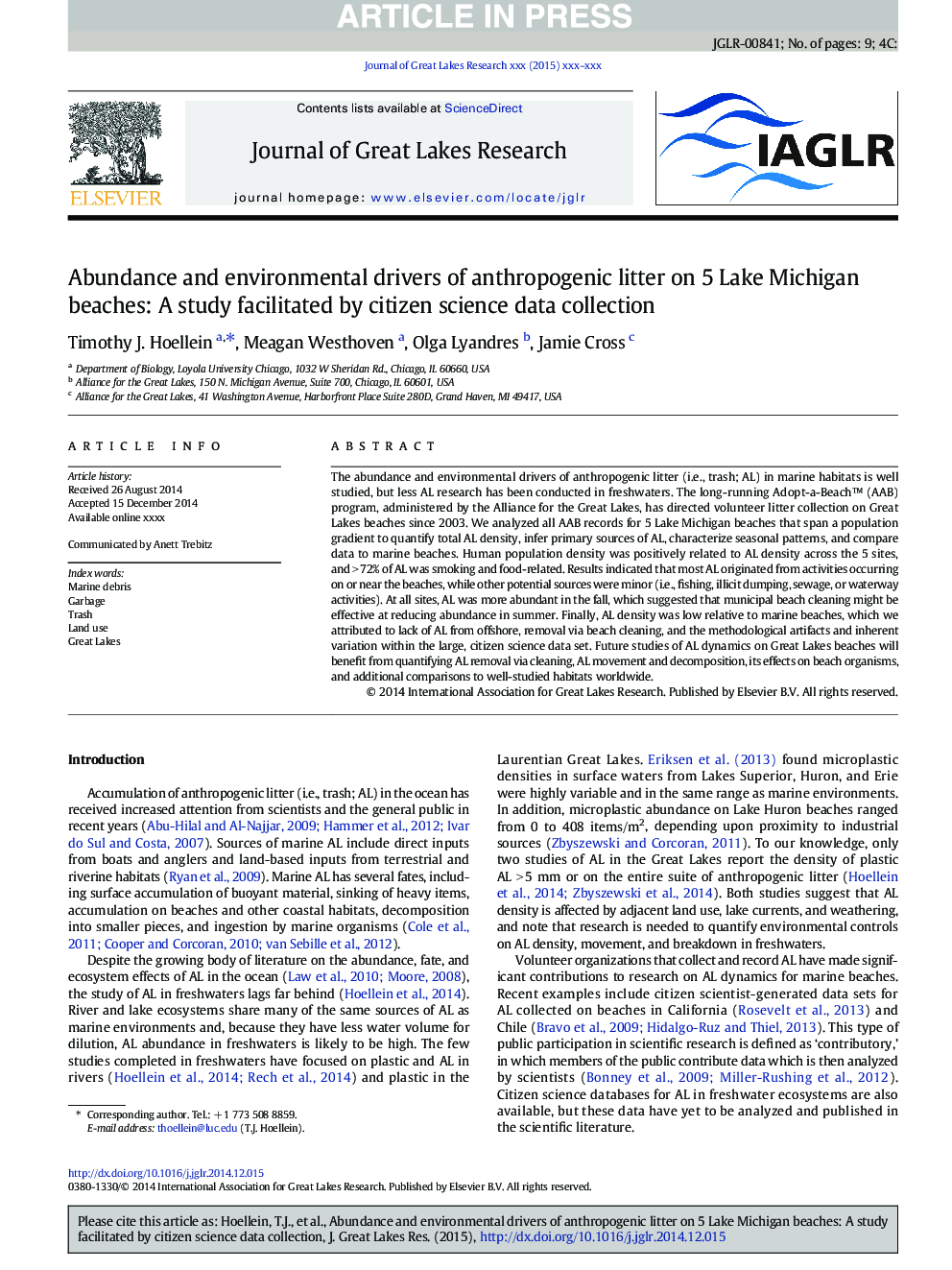| Article ID | Journal | Published Year | Pages | File Type |
|---|---|---|---|---|
| 6305139 | Journal of Great Lakes Research | 2015 | 9 Pages |
Abstract
The abundance and environmental drivers of anthropogenic litter (i.e., trash; AL) in marine habitats is well studied, but less AL research has been conducted in freshwaters. The long-running Adopt-a-Beach⢠(AAB) program, administered by the Alliance for the Great Lakes, has directed volunteer litter collection on Great Lakes beaches since 2003. We analyzed all AAB records for 5 Lake Michigan beaches that span a population gradient to quantify total AL density, infer primary sources of AL, characterize seasonal patterns, and compare data to marine beaches. Human population density was positively related to AL density across the 5 sites, and > 72% of AL was smoking and food-related. Results indicated that most AL originated from activities occurring on or near the beaches, while other potential sources were minor (i.e., fishing, illicit dumping, sewage, or waterway activities). At all sites, AL was more abundant in the fall, which suggested that municipal beach cleaning might be effective at reducing abundance in summer. Finally, AL density was low relative to marine beaches, which we attributed to lack of AL from offshore, removal via beach cleaning, and the methodological artifacts and inherent variation within the large, citizen science data set. Future studies of AL dynamics on Great Lakes beaches will benefit from quantifying AL removal via cleaning, AL movement and decomposition, its effects on beach organisms, and additional comparisons to well-studied habitats worldwide.
Related Topics
Physical Sciences and Engineering
Earth and Planetary Sciences
Earth and Planetary Sciences (General)
Authors
Timothy J. Hoellein, Meagan Westhoven, Olga Lyandres, Jamie Cross,
